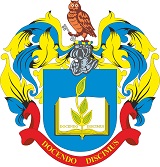Будь ласка, використовуйте цей ідентифікатор, щоб цитувати або посилатися на цей матеріал:
http://46.63.9.20:88/jspui/handle/123456789/1111| Назва: | Interactive art: fueling creative development |
| Інші назви: | Arte interactivo: impulsando el desarrollo creativo |
| Автори: | Buchkivska, G. Greskova, V. Kachurynets, L. Tsyhaniuk, L. Mozoliuk, O. |
| Ключові слова: | art education virtual educational environment music education educational innovations virtual technologies educación artístict entorno educativo virtual educación musical tecnologías virtuales |
| Дата публікації: | 2024 |
| Видавництво: | Eduweb |
| Бібліографічний опис: | Buchkivska G., Greskova V., Kachurynets L., Tsyhaniuk L., Mozoliuk O. Interactive art: fueling creative development. Revista Eduweb. 2024. Vol. 8. №3, julio-septiembre. P. 239-251. URL: https://doi.org/10.46502/issn.1856-7576/2024.18.03.18 |
| Короткий огляд (реферат): | The aim of the research is to analyse the impact of interactive art projects on the development of creative abilities of future artists and musicians. The research employed testing methods (Torrance Tests of Creative Thinking (TTCT), Creative Skills Assessment, Divergent Thinking Test). The reliability of the methods was tested by using Cronbach’s alpha. The results were tested using standard statistical methods, namely chi-square, mean deviation, t-test. The experimental group (EG) demonstrated statistically significant better idea generation (p = 0.04, d = 0.23) and flexibility (p = 0.02, d = 0.43) compared to the control group (CG). The study found a statistically significant difference between the EG and the CG on some measures of creativity and divergent thinking. The EG demonstrated better idea generation and flexibility compared to the CG. The obtained results confirm the research hypothesis and testify to the positive impact of virtual art projects on the students’ creative development. Studies with larger numbers of participants and better control for extraneous factors are needed to definitively confirm and better understand the reasons for these discrepancies. El objetivo de la investigación es analizar el impacto de los proyectos de arte interactivo en el desarrollo de las capacidades creativas de futuros artistas y músicos. En la investigación se emplearon métodos de evaluación (Torrance Tests of Creative Thinking (TTCT), Creative Skills Assessment, Divergent Thinking Test). La fiabilidad de los métodos se comprobó mediante el alfa de Cronbach. Los resultados se comprobaron mediante métodos estadísticos estándar, a saber, chi-cuadrado, desviación media y prueba t. El grupo experimental (GE) demostró una mejora estadísticamente significativa en la generación de ideas (p = 0,04, d = 0,23) y la flexibilidad (p = 0,02, d = 0,43) en comparación con el grupo de control (GC). El estudio halló una diferencia estadísticamente significativa entre el GE y el GC en algunas medidas de creatividad y pensamiento divergente. El GE demostró una mejor generación de ideas y flexibilidad en comparación con el GC. Los resultados obtenidos confirman la hipótesis de la investigación y atestiguan el impacto positivo de los proyectos artísticos virtuales en el desarrollo creativo de los alumnos. Se necesitan estudios con un mayor número de participantes y un mejor control de los factores externos para confirmar definitivamente y comprender mejor las razones de estas discrepancias. |
| URI (Уніфікований ідентифікатор ресурсу): | https://doi.org/10.46502/issn.1856-7576/2024.18.03.18 http://46.63.9.20:88/jspui/handle/123456789/1111 |
| ISSN: | 1856-7576 |
| Розташовується у зібраннях: | Кафедра вокалу та диригентсько-хорових дисциплін |
Файли цього матеріалу:
| Файл | Опис | Розмір | Формат | |
|---|---|---|---|---|
| Buchkivska G., Greskova V., Kachurynets L., Tsyhaniuk L., Mozoliuk O. Interactive art fueling creative development. Web Of Science.pdf | 645,78 kB | Adobe PDF |  Переглянути/Відкрити |
Усі матеріали в архіві електронних ресурсів захищені авторським правом, всі права збережені.
